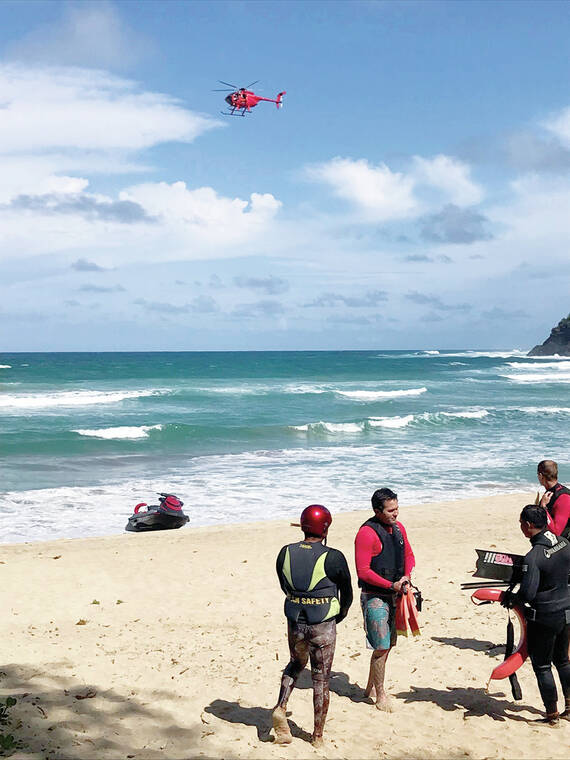LIHU‘E — Another search for a missing man was suspended this weekend in the third ocean disappearance in two weeks.
Benjamin Brothers, an 80-year-old Hanapepe man, was reported missing on Wednesday. His truck and trailer were located in Port Allen Small Boat Harbor and his personal watercraft was found more than six miles offshore.
Brothers’ disappearance is the latest in a series of recent ocean-safety incidents that first responders have described as “unprecedented.” In 2021, there was only one such ocean disappearance the entire year.
The first incident occurred on March 5, when Matthew Preziose, a 25-year-old photographer and graphic designer on vacation from New Jersey, was swept out to sea while swimming off of Lumaha‘i Beach.
Just two days later, local businessman Huy Nguyen disappeared while swimming with his family at Rock Quarry (Kahili) Beach in Kilauea.
Extensive, 72-hour search-and-rescue missions found no signs of the missing individuals.
Costs of search
and rescue
These missions can put strains on the emergency-response teams, who are spread thin by the exhaustive efforts.
“As county services and resources are deployed on extensive rescue missions, regular services are weakened, and overtime costs can be challenging,” Kaua‘i Fire Department Ocean Safety Bureau Chief David Kalani Vierra said in an email.
A contract for operations and maintenance of a helicopter used in these search missions costs the county about $562,140 annually, though it is utilized in other operations as well.
U.S. Coast Guard crews, who work around the clock during rescue missions, also face challenges during these prolonged searches.
“They’re getting beat up on the water. The sea state isn’t always pleasant,” said Kaua‘i USCG Station Chief Petty Officer Timothy Elhajj. “When you’re talking about extended endurance searches, they’re going out with minimal crews sometimes. When we know that we have the potential to search for 72 hours we have to spread our boat crews out. So we’re doing more with less.”
While these searches were ultimately fruitless, emergency-response teams on island have also spearheaded many lifesaving ocean rescues.
In just the last week, a 90-minute search lead to the rescue of a missing Wailua man off Kealia Beach, and a teenage girl from O‘ahu was rescued from Queen’s Bath on Monday.
In total, 26 ocean rescues have occurred from Jan. 2022 to March 15, while 2021 saw 274 rescues total.
Rescues largely have occurred on the North Shore, with Vierra listing Queen’s Bath, Lumaha‘i, ‘Anini and Hanakapi‘ai as hot spots. Ocean-safety incidents are also commonplace at Shipwrecks (Keoniloa Bay) and Polihale State Park.
The period from October to April is the most dangerous time of the year, Vierra wrote, with “extreme high surf and hazardous ocean conditions (that) can change on a moment’s notice.”
Kaua‘i and ocean safety
Ocean safety has long been a difficulty on Kaua‘i, with hundreds of drownings.
A 2020 study based on the most-recent data recorded 73 drownings on Kaua‘i between 2009 and 2018.
Another study conducted by Kaua‘i geoscientist Chuck Blay showed that from 1970 to 2012, some 316 people drowned off Kaua‘i shores. The report also showed that men were dramatically more likely to drown than women, nine to one, and that tourists accounted for 75% of all drowning victims.
The County of Kaua‘i partners with the Kaua‘i Lifeguard Association and the Kaua‘i Visitors Bureau to provide an informational video on the dangers of the ocean, which is displayed at Lihu‘e Airport to incoming travelers. There are also several permanent signs around the island — including at Po‘ipu Beach Park, Queen’s Bath and Ke‘e Beach.
When there are hazardous ocean conditions, lifeguards install additional warning signs, and swimming advisories are relayed to the public.
The county advises swimmers to avoid beaches where no lifeguard is present.


